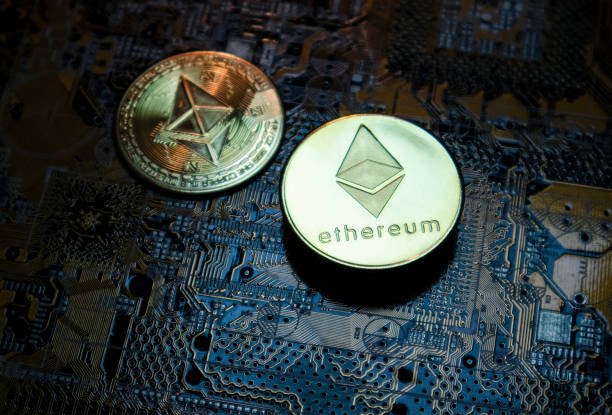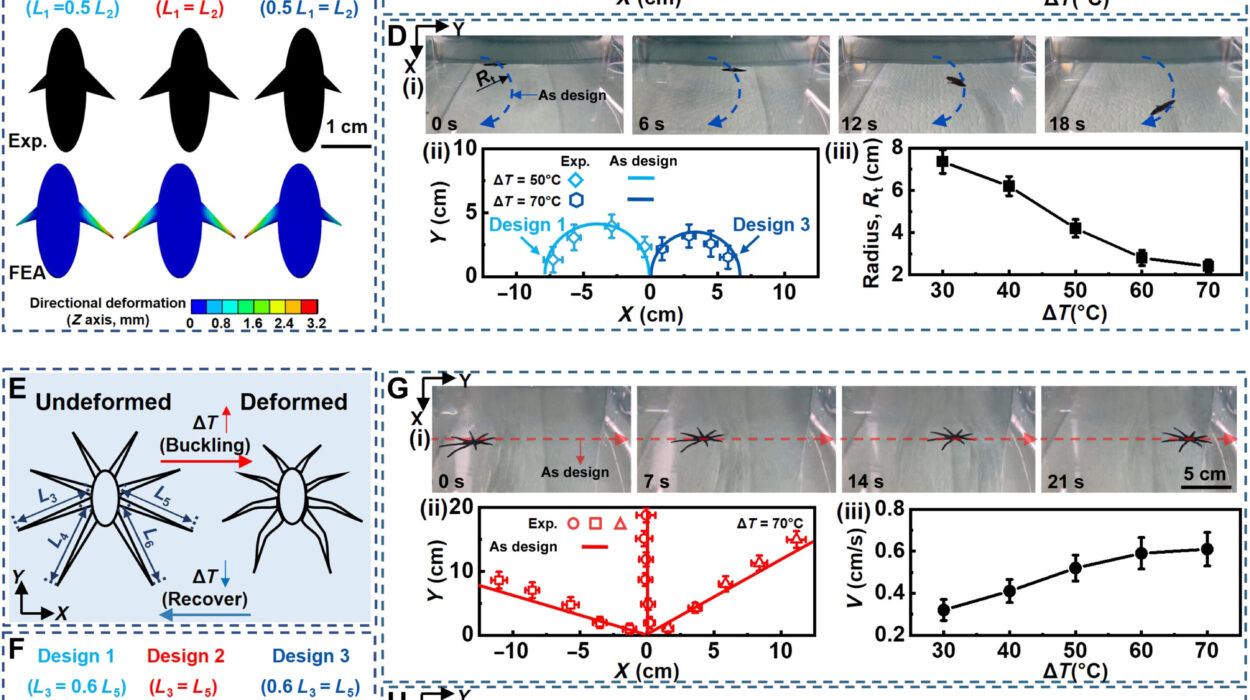Ethereum is not just another cryptocurrency. It is a vast, decentralized ecosystem, a platform, and a new era of innovation in the blockchain space. While Bitcoin (BTC) is often the first name that comes to mind when people think about cryptocurrencies, Ethereum stands as a giant in its own right—offering far more than just digital money. So, what exactly is Ethereum, and why has it captivated the imaginations of developers, businesses, and tech enthusiasts around the world?
In simple terms, Ethereum is a decentralized blockchain platform that enables developers to build and deploy smart contracts and decentralized applications (dApps). Unlike Bitcoin, which is primarily focused on peer-to-peer digital currency transactions, Ethereum’s main innovation lies in the concept of “smart contracts”—self-executing contracts with the terms of the agreement directly written into code.
But to understand Ethereum’s full potential, we need to go deeper into its architecture, the technology behind it, and the ecosystem that is rapidly evolving around it. By the end of this article, you’ll have a clear understanding of what Ethereum is, how it works, and why it is considered a revolutionary force in the world of blockchain technology.
The Birth of Ethereum: Visionary Origins
The story of Ethereum begins in 2013 with a visionary young programmer named Vitalik Buterin. Vitalik, a Russian-Canadian developer, was already involved in the world of cryptocurrencies through his work with Bitcoin. However, he felt that Bitcoin, as powerful as it was, had its limitations. Bitcoin was primarily designed to serve as a decentralized digital currency, but it lacked the flexibility to create more complex applications on top of its blockchain. Vitalik envisioned a platform that could support not just digital transactions, but also decentralized applications (dApps) and smart contracts—programs that could automatically execute contract terms when specific conditions were met.
To bring this idea to life, Vitalik co-founded Ethereum in 2014, alongside other prominent developers such as Gavin Wood, Joseph Lubin, and Anthony Di Iorio. They raised funds for the project through a crowdfunding campaign (an Initial Coin Offering, or ICO) in 2014, which helped propel the development of Ethereum. The Ethereum network officially went live on July 30, 2015, with the launch of its first version, called “Frontier.”
What Makes Ethereum Unique?
At its core, Ethereum is a decentralized platform that leverages blockchain technology to enable the creation and execution of smart contracts and decentralized applications (dApps). Let’s break down the key components that make Ethereum unique:
1. The Ethereum Blockchain: The Heart of the System
At the heart of Ethereum lies its blockchain. Much like Bitcoin, Ethereum uses a blockchain to securely record transactions and data in a decentralized manner. However, unlike Bitcoin, Ethereum’s blockchain is more versatile. It allows for more than just simple transactions of digital currency; it can also store and execute code through smart contracts.
The Ethereum blockchain consists of a chain of blocks, each containing data that records transactions, contract executions, and more. Each block in the chain is linked to the previous one, ensuring the integrity and immutability of the entire network. The decentralization of Ethereum means that no single entity controls the network. Instead, thousands of nodes (computers) around the world validate and maintain the blockchain, ensuring that it remains transparent, secure, and tamper-resistant.
2. Smart Contracts: The Brain Behind Ethereum’s Power
Smart contracts are perhaps the most revolutionary aspect of Ethereum. These are self-executing contracts where the terms of the agreement between buyer and seller are directly written into code. Once the contract conditions are met, the contract automatically executes the actions, such as transferring funds or triggering another action, without requiring a middleman or centralized authority.
For example, imagine you’re renting an apartment. In a traditional scenario, you might go through a real estate agent or a lawyer to draft and enforce the contract. With a smart contract on Ethereum, however, the terms of the agreement—such as the rental payment schedule, the duration of the lease, and the condition of the property—are encoded in the contract. When the tenant makes a payment, the contract automatically verifies it and sends the payment to the landlord. If the tenant doesn’t pay on time, the contract can trigger a penalty or even the termination of the lease.
The beauty of smart contracts is their transparency, security, and immutability. Once deployed, a smart contract cannot be altered or tampered with, ensuring that all parties involved follow the agreed terms.
3. Decentralized Applications (dApps): Power to the People
While smart contracts are the building blocks of Ethereum, decentralized applications (dApps) are the next level of innovation. dApps are applications that run on the Ethereum blockchain, rather than on centralized servers controlled by a single entity. These applications can be anything from games to financial services to social networks.
The key advantage of dApps is their decentralization. Since they run on the Ethereum blockchain, they are not owned or controlled by a single company or individual. Instead, they rely on the Ethereum network to run and execute their code, making them more secure, transparent, and resistant to censorship. Moreover, since there is no central authority, dApps are often more resilient to shutdowns or attacks.
Some well-known examples of dApps include decentralized finance (DeFi) platforms, which offer financial services like lending, borrowing, and trading without the need for traditional banks or financial institutions. Other examples include games that use blockchain to enable true ownership of in-game assets, or decentralized social networks where users have more control over their data.
4. Ether (ETH): The Fuel of the Ethereum Network
Ether (ETH) is the native cryptocurrency of the Ethereum network. It is used to pay for transaction fees and computational services on the Ethereum platform. Every time a smart contract is executed or a transaction is made, a small amount of Ether is paid as a fee to compensate the miners (or validators) who process and verify the transaction.
Ether is also used to incentivize participants in the Ethereum ecosystem. For example, developers who create and deploy dApps on the Ethereum blockchain can earn Ether from users who interact with their applications. Similarly, miners (or validators, in Ethereum 2.0) earn Ether by validating transactions and securing the network.
In many ways, Ether serves as both the fuel and the incentive that powers the entire Ethereum ecosystem. Without Ether, the Ethereum blockchain wouldn’t function.
Ethereum 2.0: A Vision for the Future
While Ethereum has already established itself as a groundbreaking platform, it’s also undergoing a major upgrade to enhance scalability, security, and sustainability. This upgrade is known as Ethereum 2.0, or ETH2, and it aims to address some of the challenges the Ethereum network has faced, particularly around high transaction fees and energy consumption.
1. Proof of Stake (PoS): Moving Away from Energy-Intensive Mining
One of the most significant changes in Ethereum 2.0 is the transition from the current Proof of Work (PoW) consensus mechanism (used by Bitcoin) to Proof of Stake (PoS). PoW requires miners to solve complex mathematical problems to validate transactions, which consumes a tremendous amount of energy. Ethereum’s move to PoS will drastically reduce its energy consumption, making it more environmentally friendly.
Under PoS, validators (rather than miners) are chosen to create new blocks and verify transactions. To become a validator, one must lock up a certain amount of Ether as collateral. The more Ether a validator stakes, the higher their chances of being selected to validate transactions and earn rewards. This system is more energy-efficient and allows for faster transaction processing.
2. Shard Chains: Scaling Ethereum for the Future
Another important feature of Ethereum 2.0 is the introduction of shard chains. Currently, Ethereum operates on a single blockchain, which limits its scalability. As more users and developers join the network, the blockchain can become congested, leading to slower transactions and higher fees.
Sharding is a method of dividing the blockchain into smaller pieces (or “shards”), each capable of processing its own transactions and smart contracts. This will increase the network’s capacity to handle more transactions simultaneously, reducing congestion and making Ethereum more scalable. Shard chains will allow Ethereum to support thousands—or even millions—of transactions per second, making it more viable for mainstream adoption.
The Broader Ethereum Ecosystem
Ethereum is not just a blockchain or a cryptocurrency; it is the foundation for a thriving ecosystem of projects, protocols, and platforms. Some of the most significant developments and use cases in the Ethereum ecosystem include:
1. Decentralized Finance (DeFi)
Decentralized finance (DeFi) has emerged as one of the most exciting applications of Ethereum. DeFi refers to a set of financial services—such as lending, borrowing, trading, and insurance—that are built on top of blockchain networks like Ethereum. These services are decentralized, meaning they do not rely on traditional financial institutions like banks or brokers.
DeFi platforms enable users to access financial services without needing a middleman. For example, platforms like Compound and Aave allow users to lend and borrow cryptocurrencies directly from one another, with smart contracts ensuring that the terms are met automatically. Other DeFi projects, such as Uniswap, enable decentralized trading of cryptocurrencies, without relying on centralized exchanges.
The DeFi movement has exploded in popularity, with billions of dollars locked in various DeFi protocols. It has the potential to revolutionize the global financial system by offering more accessible, transparent, and efficient alternatives to traditional financial services.
2. Non-Fungible Tokens (NFTs)
Another fascinating development on the Ethereum network is the rise of non-fungible tokens (NFTs). NFTs are unique digital assets that represent ownership of a specific item or piece of content, such as art, music, or virtual real estate. Unlike cryptocurrencies like Bitcoin or Ether, which are interchangeable and have the same value, NFTs are one-of-a-kind and can be bought, sold, or traded on blockchain-based marketplaces like OpenSea.
NFTs have gained significant attention in recent years, with high-profile sales of digital artwork and collectibles. Ethereum’s blockchain provides the perfect platform for NFTs, thanks to its support for smart contracts and token standards like ERC-721 and ERC-1155.
3. Enterprise Adoption: Ethereum in the Real World
Ethereum is not just a tool for individual developers and hobbyists; it is also being embraced by large enterprises and organizations. Companies across various industries are exploring how Ethereum’s blockchain technology can be used to improve supply chain management, identity verification, voting systems, and more.
For example, companies like Microsoft, IBM, and JPMorgan are experimenting with Ethereum-based solutions to streamline business processes and increase transparency. The Enterprise Ethereum Alliance (EEA), a consortium of companies and organizations, is working to create enterprise-grade blockchain solutions using Ethereum’s technology.
The Challenges Ahead: Scalability, Security, and Adoption
While Ethereum has achieved tremendous success, it still faces several challenges as it continues to grow. The most prominent challenges include:
- Scalability: Despite Ethereum 2.0’s plans to implement sharding, the network can still become congested when demand for transactions surges. This can lead to high gas fees and slow transaction times.
- Security: As Ethereum’s ecosystem grows, so too does the potential for vulnerabilities. Hacks and exploits of smart contracts and dApps have occurred, highlighting the need for robust security measures and audits.
- Adoption: While Ethereum is widely used in the blockchain and cryptocurrency community, mass adoption by mainstream users, businesses, and governments is still a work in progress.
Conclusion: Ethereum’s Revolutionary Impact
Ethereum is more than just a cryptocurrency—it is a technological revolution. With its decentralized platform, smart contracts, and dApps, Ethereum has opened the door to an entirely new world of possibilities. From decentralized finance (DeFi) to non-fungible tokens (NFTs) and enterprise adoption, Ethereum is changing how we think about trust, transparency, and value in the digital age.
While the road ahead is filled with challenges, Ethereum’s potential to reshape industries and empower individuals is undeniable. Whether you’re a developer, investor, or enthusiast, the future of Ethereum promises to be an exciting one. As the network continues to evolve and mature, it could very well become the foundation for the next generation of decentralized applications and services, shaping the future of technology for years to come.






